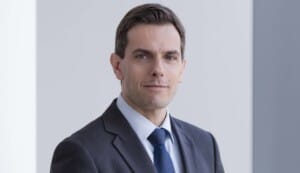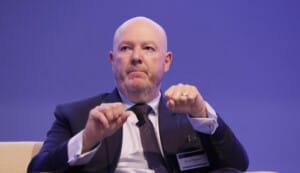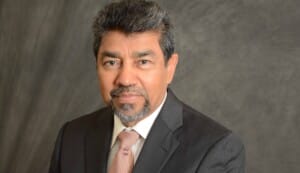Published in partnership with Pictet Asset Management
Demographics is destiny, or so the saying goes. As populations grow, and as they move about, there will be investment opportunities that arise from their needs, their activity and their consumption.
The study of demographic trends helps investors understand how significant those opportunities are likely to be, in what countries, regions and sectors they are likely to be, and what those opportunities will look like in future.
Director of research and insights at the $A223 billion ($151.5 billion) Future Fund, Craig Thorburn, says demographics is “one of a number of what I would call top-down forces at play that would be incorporated into our investment processes”.
“Think of it from a macro-driver perspective: what impact do demographics have on growth and inflation?” Thorburn says.
“At a macro level, those two variables – growth and inflation – are incredibly important when it comes to assumptions, core assumption sets, that as a result feed into not only our investment process, but our portfolio construction process and our investment strategy overall.”
School Employees Retirement System of Ohio (SERS) chief investment officer Farouki Majeed says the $18.8 billion fund conducts an asset-liability review every two years, and “return assumptions for asset classes more frequently than that”. In making those assumptions, demographic issues come into play – sometimes directly, sometimes indirectly, through measures such as gross domestic product.
“There are mega trends, and demography is a mega trend,” Majeed says.
“That’s the way I look at it. It’s a mega trend that’s likely impacting over the longer period. You’ve got to pay attention to it, it’s got to be there in the process.”
Pictet Asset Management (Pictet AM) chief strategist Luca Paolini says the challenge for investors is to marry long-term views based on demographic trends with a demand to generate returns over often much shorter time periods.
Pictet AM’s strategy unit (PSU), of which Paolini is a member, provides asset allocation guidance for short-term and long-term horizons across equities, bonds, commodities and alternatives. Every year the PSU produces the Secular Outlook, a publication providing asset class return forecasts for the next five years.
“This is for us like an anchor,” Paolini says. “It doesn’t necessarily affect the day-to-day, but when we have to sit down and make a decision, even for six to 12 months, the long-term view that we have is relevant.
“When we look at the long term, the two most important things are growth and, basically, valuation. Think about this: how much companies will make in terms of profit, and how much investors are willing to pay for that profit. And both are affected by demographics significantly.”

Paolini says demographics affects markets and therefore investment returns in several ways. The first and often the clearest is at a macro level.
“An aging population means lower productivity, that’s obvious in a way,” he says.
“It affects inflation, and this is something that I think got lost in translation. An aging society is, by default, very, very allergic to inflation. [For] most of our compatriots who live on pensions, yes, there is an adjustment there, but I can tell you that you tend to lose with high inflation.”
Paolini says this plays into “Another element which I think also tends to be a little bit forgotten”, namely, the politics of demographics.
“An aging society tends to be…more conservative,” he says.
“More conservative means less risky. They tend to stick with the status quo, normally.
“There is a real challenge here that you’re going to see, in especially developing economies, a left versus right divide. That’s always been the case, but [now it’s] old versus young.
“There is an increased level of polarisation in politics, which is mainly, not only, along demographic lines.”
Paolini says Pictet AM doesn’t have a dedicated internal demographic resource and draws many of its insights from the United Nations and World Bank databases.
“My job is to transform this data into expectation for financial assets, and this is much more difficult,” he says.
“Conventional wisdom says: you are getting older you spend more; I say you spend less. And that’s a huge difference, if you are, let’s say, a consumer-facing company. It’s very relevant.”
Demographics and market volatility
Future Fund departs from a strictly traditional view of demographics in its consideration of so-called generational “turnings” and their impact on market volatility.
This comes from some of the work conducted by demographer and author Neil Howe, who describes a turning as “the historical cycles that are driven by a generational change” and for whom, along with colleague William Strauss, the Strauss-Howe generational theory is named.
Put simply, there is a time when every generation is shaped by history, and then there is a time when that generation shapes history. A generation’s experience of being shaped by history determines how it then shapes history itself.
“That has a predictable time scale,” Howe says.
“They will then shape the next generation, in a different way. So if there’s an interaction, if there’s a yin-and-yang-like relationship between how these generations govern the creation of each other, there is actually a pattern that can be worked out. It’s predictive in a long-term sociological sense.”
This theory suggests that “we’re entering a crisis era, in which we will see a lot more stresses on domestic policy and geopolitics”, Howe says.
(Howe and Strauss found that turnings occur at intervals of roughly two decades. The first turning is a so-called “high”, which last occurred, in the US at least, in the late 1940s through to the early 1960s, and is characterised by strong institutions and minimal individualism.)
“One of the big qualitative ways of putting it is that a crisis era is one in which there’s a tremendous amount of division, conflict, uncertainty, and hugely bifurcated outcomes – you’re not sure who’s going to win, or which side will come out on top,” Howe says.
“But ultimately, one thing you do know is that a lot of the problems that society faces going into the fourth turning, such as social and economic inequality, the loss of community, the loss of institutional trust, the loss of preparation or investment in the future, a lot of these things are actually solved in the first turning, where all those things come back: greater equality, greater trust in the system, institutions that work better, and policies that are much more oriented toward long-term future preparation. We’ve seen that repeatedly throughout history.”
Thorburn says the point for an investor from this view of the world is that as we enter a crisis era “you may need to price in more risk”.

“In other words, you’ve actually got a higher equity risk, you may have to think about a higher equity-risk premia,” he says. “You may need to think about higher term premia in the context of bond markets – things that we haven’t had to think about for decades.”
Demographics may indeed be destiny, but as Thorburn has previously pointed out, destiny doesn’t happen by chance, it happens by choice.
So, while demographic indicators in a particular region or country may be strong, there are other issues also to consider which are very much a matter of choice, including “fiscal policy developments; monetary policy developments; policy developments in general, actually; debt levels, so debt super cycles”, he says.
“There’s a whole host of these thematics, of which demographics is but one,” he says.
“And we have to work out well, how do we weave all of these into our investment process?”
Global and regional considerations
Thorburn says Future Fund considers demographics at both a global and regional level, which can lead to very broad conclusions, such as the growth potential of Asia being more attractive than that of Europe.
But that alone can’t be the arbiter of investment decisions because other factors also come into play – Africa, for example, may have a stronger demographic profile than Asia, but it shapes up overall quite differently as an investment destination.
Thorburn says demographics also come into the picture at a sector level.
“If you’re looking at owning a port or an airport, you probably want to think about the level of traffic that’s coming through,” he says.
“Think of that as a demand-type thing. And obviously, if you’ve got a healthier, more vibrant, more traveling, younger population willing to fly or travel, or you’ve got a strong demand-side of an economy due to a vibrant population, then you’re going to be more likely looking at assumption sets for the asset that are going to be more positive than other examples where unfortunately, that asset could be in countries or regions where it doesn’t have that same level of prosperous population growth.”
Some investors factor in demographic trends explicitly. Some factor them in by association. But even asset owners that do not explicitly include a demographic input into their investment decisions nevertheless integrate demographics into what they do through other measures.
Farouki Majeed says forecasts of GDP growth and inflation, for example, have an implied demographic element.
“It’s incorporated in GDP in the sense that if you look at GDP as a two-factor model, it’s population times productivity growth,” Majeed says.
Majeed says a consideration of demographics must also include the movement of people between countries or regions – this has, among other things, a bearing on the availability and therefore the cost of labour.

“Countries in Europe can only maintain their workforce by immigration, and if they don’t have immigration, they will have a shrinking workforce,” he says.
For a sector such as healthcare, for example, where there is clearly rising demand as populations age, immigration is a critical factor in supply, Majeed says.
“A good percentage of the NHS in the UK, the National Health Service, is staffed by immigrants,” he says.
“That’s the going to be the case in many other countries in Europe as well. But of course, it leads to potential political issues. The issues of demographics and migration are something we consider.
“The US, on the other hand, still has a pretty good demographic picture, in the sense of population growth. There is still a good amount of immigration, and so that’s helping to keep the US economy going forward, besides, of course, the innovation aspects of the US economy.”
Starting with SAA
When useful demographic trends have been identified, their likely impact must be incorporated into an investment decision-making process, and for Pictet AM’s Paolini this starts at a strategic asset allocation level.
“First of all, when we look at the financial markets, we look at equities or bonds,” Paolini says. “Is this demographic trend better for equity [or] better for bonds?”
It sounds simple, but even this can become complicated.
“On equity versus bonds, the theory until recently was if you live longer, obviously you are more risk-averse, so in theory you prefer bonds to equities,” Paolini says.
“Then we see this big rise in inflation, [and] we say wait a second. If you are old and you have a pension, what is the best action, bonds or equities? Probably equities. So you see, it’s not clear. For us though, this is the first choice. Then the focus moves to specific sectors, and how the long-term demographic trends may play out.
“The obvious choice would be pharma, and it is probably right,” Paolini says.
“But which part of pharma? We feel that because of this demand for innovation, biotech is probably the best sector because it’s a kind of an intersection of tech, innovation, pharma; it’s probably the sweet spot that you want.”
Ohio’s Majeed says demographic trends also underpin the attractiveness of other sectors.
“For example, when we look at infrastructure assets, because there’s demand, the usage, that’s very much [dependent on] a population trend,” he says.
“You’ve got to look at the usage of those types of assets, [which are] very much dependent on not only the population, but the affluence of the population, the use of toll roads, airports, and all of those types of things.
“What impacts that property is very much similar. When we look at how our investments are in real estate across the US, that’s what we find – most of our property allocations are in population growth centres.”
But to Paolini’s earlier point, demographic trends may play out over many years and investors are often being asked to generate returns over shorter time periods. Valuations may be too high at a given point in time to justify investment, even given the positive long-term view.
When short-term valuations and asset-class outlooks are at odds with, or don’t strongly support, an investor’s long-term view, there’s a decision to be made, but Paolini says it always helps to have that long-term anchor.
“We separate very well what is tactical and what is secular,” he says.
“Secular in a way changes very slowly as you can imagine, and mainly not because the secular trends are changing, [but] because the market has already incorporated all the good news or the bad news in the space.”
While the integration of demographic trends into investment decisions can get complicated at a sectoral and at a security level, the argument for incorporating demographics into those decisions is nevertheless strong.
“Demographic trends affect growth and inflation; this will affect, basically, profit growth and valuation; we plug this into our models, and we get the result that we get,” Paolini says.
“In the end, there are some sectors that we will never probably buy long term, but in the short term they can be actually the most attractive due to valuation or the stage of the business cycle.
“That’s the challenge as an investor.”